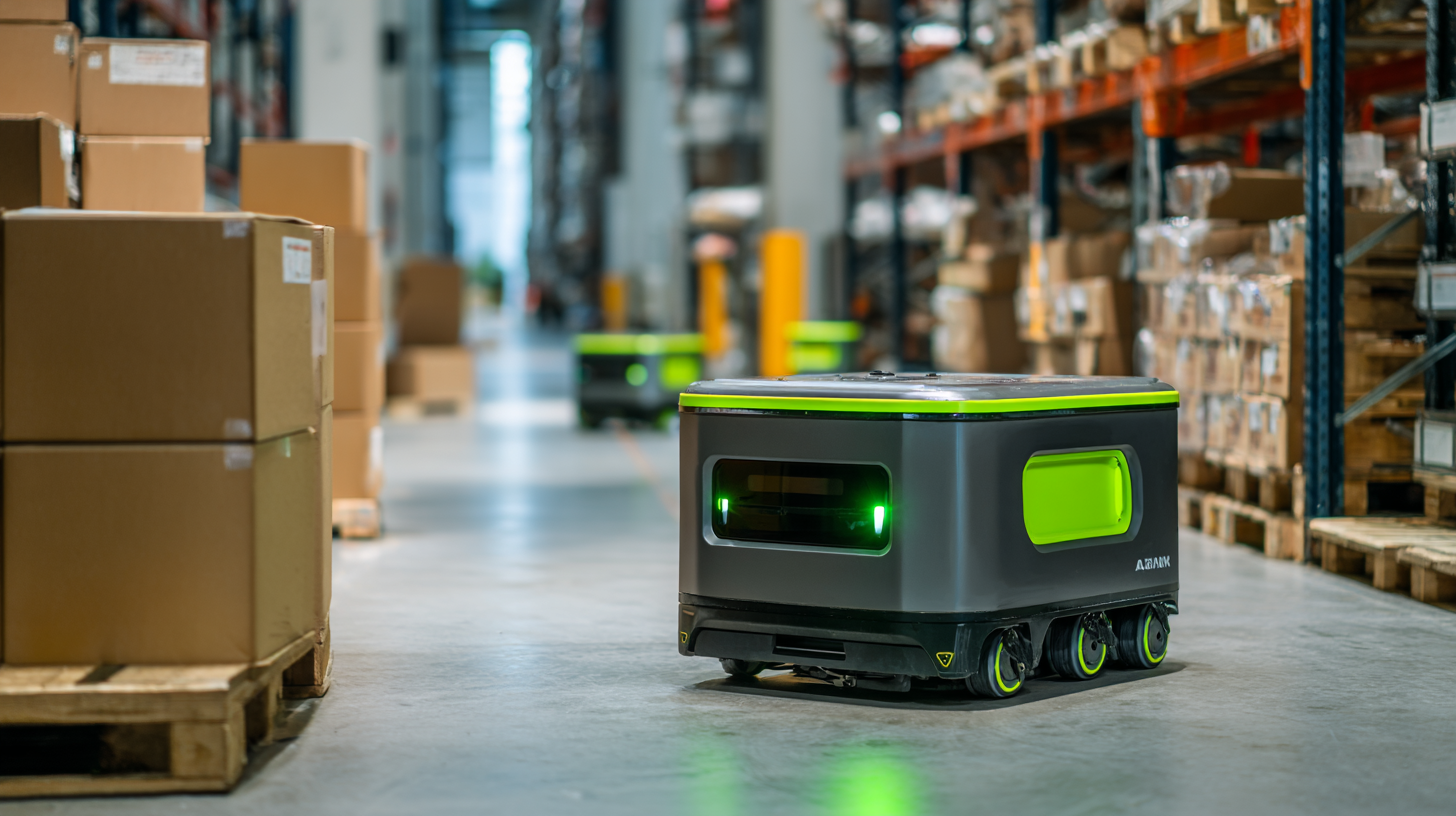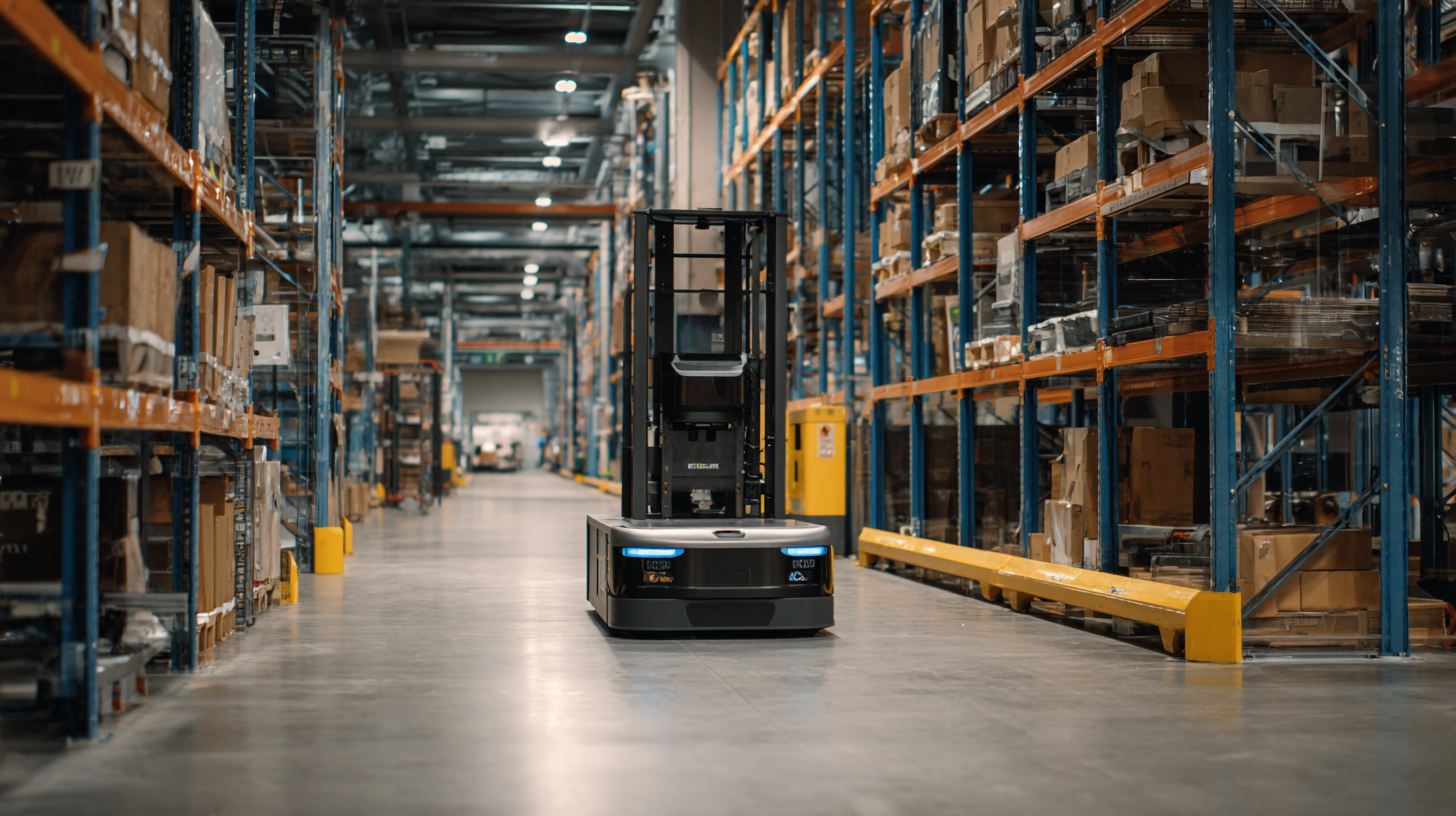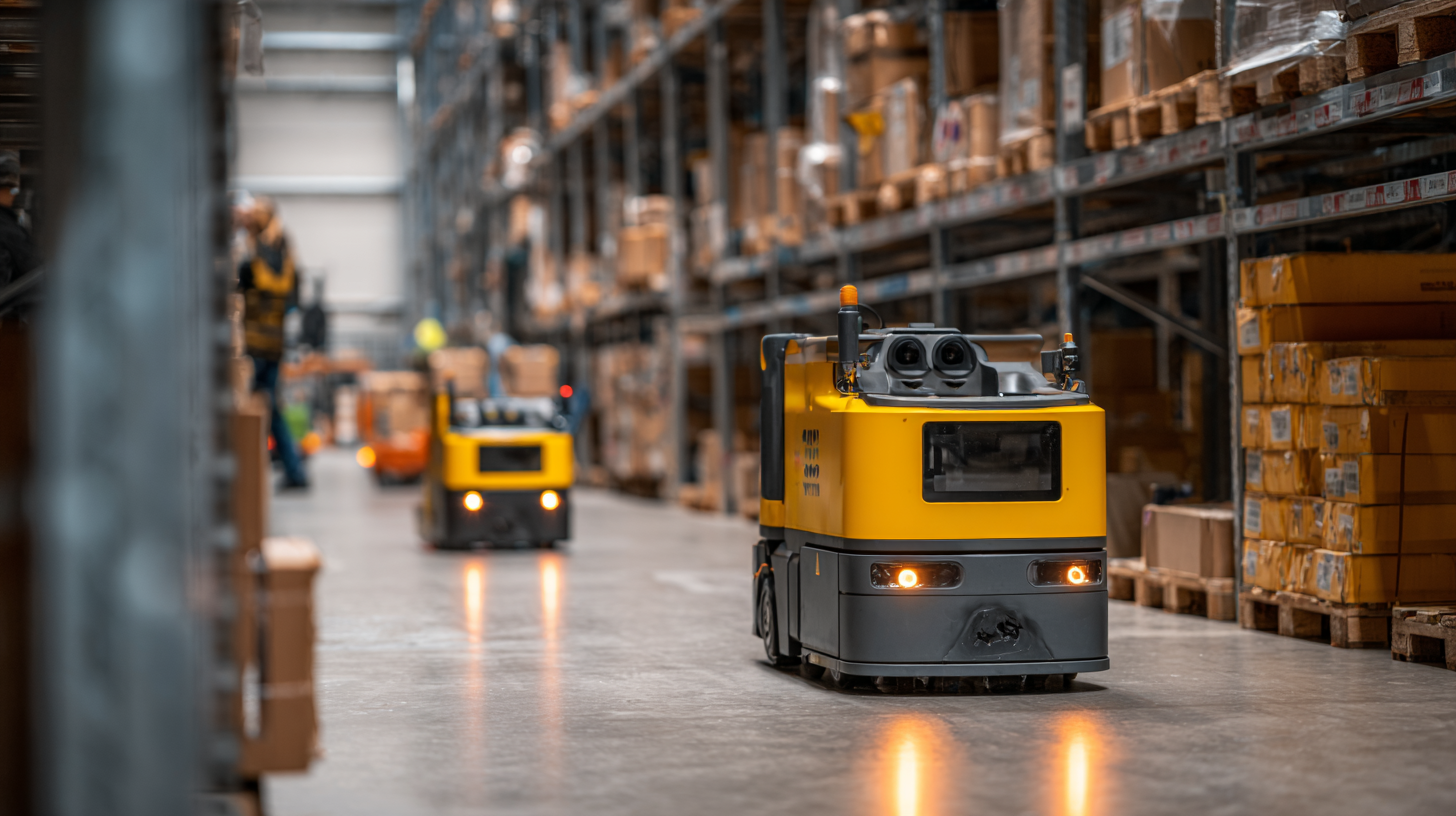How to Enhance Warehouse Efficiency with AMR Robots
In the rapidly evolving landscape of logistics and supply chain management, the integration of AMR robots has emerged as a transformative solution for enhancing warehouse efficiency. According to a recent report by the International Federation of Robotics, the adoption of automation technologies in warehouses is projected to increase by over 30% in the next five years, underscoring the critical role of AMR robots in streamlining operations.

These autonomous machines not only optimize picking and packing processes but also significantly reduce labor costs and minimize human error, leading to productivity gains of up to 25%. As the demand for faster delivery and improved accuracy intensifies, leveraging AMR robots has become imperative for businesses aiming to stay competitive in an increasingly automated environment.
Understanding AMR Robots and Their Role in Warehouse Operations
Autonomous Mobile Robots (AMRs) are revolutionizing warehouse operations by enhancing efficiency and productivity. Understanding the fundamental role of AMRs in logistics is crucial as they streamline processes and reduce manual labor. These robots can navigate complex environments, transporting goods with precision and speed, thus significantly cutting down operational time and costs. As the demand for rapid delivery increases, integrating AMRs into warehouses is becoming a strategic necessity.

The growth trajectory of the AMR market speaks volumes about its impact on warehouse management. Valued at $2.8 billion in 2024, it is anticipated to grow at a robust CAGR of 17.6% from 2025 to 2034. This growth underscores the increasing adaptation of AMRs in high-tech warehouses, transforming the traditional landscape of supply chain management. The continuous advancements in robotics, coupled with innovative simulation technologies, are enabling companies to optimize their operations by identifying the precise number of robots needed, further enhancing the warehouse's efficiency and responsiveness to market demands. As we embrace these technological advancements, the future of warehousing looks not only more efficient but incredibly exciting.
Key Benefits of Implementing AMR Robots for Warehouse Efficiency
Implementing Autonomous Mobile Robots (AMRs) in warehouses can significantly enhance operational efficiency, offering a range of benefits that transform the way logistics work. One of the primary advantages of AMR robots is their ability to navigate complex environments autonomously. Equipped with advanced sensors and mapping technology, these robots can optimize their routes in real-time, reducing the time spent on repetitive tasks such as picking and transporting goods. This capability allows human workers to focus on more strategic operations, ultimately boosting overall productivity.
Another key benefit of AMRs is their flexibility and scalability in warehouse operations. As businesses experience fluctuating demands, AMRs can be easily integrated into existing systems without requiring extensive reconfiguration. This adaptability not only supports varying workload levels but also helps in minimizing labor costs. Moreover, AMRs enhance accuracy in order fulfillment by minimizing human error, ensuring that inventory is managed more effectively. By investing in AMR technology, warehouses can leverage these efficiencies to improve service levels and maintain a competitive edge in the fast-paced logistics industry.
Enhancing Warehouse Efficiency with AMR Robots
Strategies for Integrating AMR Robots into Existing Warehouse Systems
Integrating Autonomous Mobile Robots (AMRs) into existing warehouse systems can dramatically enhance operational efficiency. According to a report by McKinsey, warehouses utilizing AMRs can increase productivity by up to 30% while reducing labor costs by nearly 20%. To successfully incorporate AMRs, companies must first conduct a thorough assessment of their current workflows. This includes identifying bottleneck areas where AMRs can alleviate manual labor, such as picking and inventory management.
Once the needs are mapped out, implementing a pilot program becomes crucial. A study by Logistics Management found that businesses that started with a pilot saw a 15-25% improvement in their material handling operations within the first three months. Furthermore, it’s imperative to ensure that AMRs are seamlessly integrated with existing Warehouse Management Systems (WMS) to allow for real-time tracking and data collection.
Regular training sessions for staff on how to work alongside robots can also optimize the integration process, helping human workers collaborate efficiently with their robotic counterparts.
Measuring the Impact of AMR Robots on Warehouse Performance
In the fast-paced world of logistics, measuring the impact of Autonomous Mobile Robots (AMR) on warehouse performance is crucial for optimizing operations. AMRs are designed to enhance efficiency by automating the movement of goods within a warehouse, which significantly reduces manual labor and minimizes human errors. Key performance indicators (KPIs) such as order accuracy, processing speed, and labor costs are essential metrics to evaluate the effectiveness of AMR implementation in a warehouse setting.
When analyzing the impact of AMR robots, it's important to track changes in throughput and cycle times. For instance, warehouses that have integrated AMRs typically experience a noticeable decrease in order fulfillment times, leading to increased customer satisfaction. Additionally, by collecting data on how AMRs interact with existing workflows, managers can obtain insights into areas that may still require manual intervention or could further benefit from automation. This data-driven approach allows for continuous improvement and ensures that the investment in AMR technology translates into measurable gains in warehouse efficiency and performance.
How to Enhance Warehouse Efficiency with AMR Robots - Measuring the Impact of AMR Robots on Warehouse Performance
| Metric | Before AMR Implementation | After AMR Implementation | Percentage Improvement |
|---|---|---|---|
| Order Picking Speed (orders/hour) | 50 | 100 | 100% |
| Average Order Fulfillment Time (minutes) | 30 | 15 | 50% |
| Inventory Accuracy (%) | 85 | 98 | 15.3% |
| Labor Costs (USD/hour) | 20 | 12 | 40% |
| Operational Downtime (%) | 15 | 5 | 66.7% |
Common Challenges and Solutions When Adopting AMR Technology in Warehousing
 Adopting Autonomous Mobile Robots (AMRs) in warehousing can significantly enhance operational efficiency, yet companies face common challenges in this integration. A report by McKinsey indicates that automating warehouse processes can improve productivity by up to 25-40%. However, challenges such as workforce resistance, integrating AMRs with existing systems, and ensuring safety protocols can hinder progress.
Adopting Autonomous Mobile Robots (AMRs) in warehousing can significantly enhance operational efficiency, yet companies face common challenges in this integration. A report by McKinsey indicates that automating warehouse processes can improve productivity by up to 25-40%. However, challenges such as workforce resistance, integrating AMRs with existing systems, and ensuring safety protocols can hinder progress.
To navigate these issues, organizations must prioritize training and change management. Involving employees early in the AMR adoption process can mitigate resistance. Engaging staff through demonstrations and open forums can foster a collaborative atmosphere. Data from Gartner shows that companies that prioritize staff involvement during technological changes see a 70% greater success rate in implementation.
Moreover, selecting the right AMR technology is crucial. Companies should conduct thorough assessments of their specific needs and the capabilities of potential AMR systems. By aligning technology deployment with warehouse operations, businesses can reduce downtime and enhance productivity. It’s essential to continually monitor performance metrics post-deployment to make necessary adjustments. Remember, ongoing training and technology updates can further maintain optimal performance and drive long-term efficiency gains.
Related Posts
-

Maximizing Efficiency with Logistics Robotics A Comprehensive How to Guide
-

How to Enhance Your Business Efficiency with Think Robotics Solutions
-

The Future of Robotics Automation Transforming Industries with Data Driven Innovations
-

Robotics Automation: A Comparative Analysis of Leading Solutions for Global Buyers
-

5 Best Innovations in Think Robotics for the Future of Automation
-

Challenges Faced by Industries Embracing Robotics and Automation